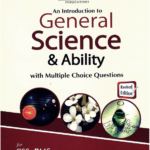Description
Getting to Yes: Negotiating Agreement Without Giving In” is a book written by Roger Fisher and William Ury, with later contributor Bruce Patton. The first edition came out in 1981. It applies an easily accessible, win-win approach to negotiations that stresses cooperation over competition. The authors make use of the “principled negotiation” method, promising to produce outcomes which are mutually beneficial by focusing not on positions, but on interests.
Separate the People from the Problem According to authors, it is very important that problems at hand be addressed rather than getting themselves entangled in personal emotions or relationships. Negotiators are asked to find the problem collaboratively while ensuring that human factors like emotions or egos do not creep into the equation and prevent a just solution from being reached. Issues are dealt with objectively, making the negotiation more constructive.
Focus on Interests, Not Positions: Rather than locking into rigid positions (what each party says they want), the book encourages focusing on underlying interests (why they want it). Understanding each party’s interest will uncover creative solutions that could satisfy both parties-meaning more flexible and win-win outcomes.
Invent Options for Mutual Gain: The book advises the negotiators to brainstorm a variety of solutions before opting for one. The motive here is to find a way to heighten alternatives and creative ways of meeting both parties’ interests. It avoids the concept of a zero-sum game mentality wherein one party gains, and the other loses. In this sense, a focus on collaboration can lead to outcomes that benefit both parties.
Use objective criteria: The authors suggest making use of objective standards and criteria, like market value, legal precedents, or expert opinions. It has the tendency to do away with disputes pertaining to the alleged personal preferences because decisions are based on evidence and not on emotional or personal opinions, making the agreement more rational and fairer than before.
The book deals with a very crucial issue that any negotiator needs to know: knowing your BATNA, or best alternative to a negotiated agreement. Knowing your BATNA might provide you leverage and confidence in the negotiations. It will also not allow you to accept a deal that is worse than your best alternative.
General Message:
Getting to Yes: Negotiating Agreement Without Giving In really encourages cooperative, problem-solving approaches to negotiating, suggesting that the goal of negotiation is to achieve win-win results rather than a zero-sum game. Focus on interests rather than on positions. Seek objective standards. Find creative solutions of mutually acceptable agreements. Ideas in the book have been widely employed in business, legal, and personal negotiations and are still employed today to better accomplish an amicable solution.










Reviews
There are no reviews yet.